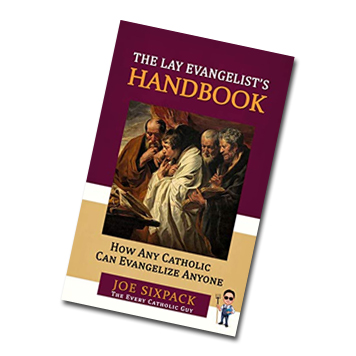Counteracting The Discarnate Image
By DONALD DeMARCO
Jerzy Kosinski’s novel, Being There, centers on a character named Chauncey Gardiner who knows but two things in his life: gardening and television. There are no people in his sheltered world. When his employer dies, Chauncey is thrust into a reality in which he is completely unprepared. In the 1979 movie version, he soon finds himself accosted on the street by hoodlums. In an effort to defend himself, he tries to get rid of them by using his TV remote. But he can neither zap them into oblivion nor change the channel. He knows nothing of real people, only electronic images of them.
This scene brings to mind a disturbing question. To what extent has our steady diet of electronically produced images caused people to see each other as mere images? The question is disturbing because images have no rights. And if we see others as images, we do not see them as bearers of rights. We can change the channel if we do not like what is playing on TV. We can do this without compunction, but we cannot do the same for real people who have the right not to be removed. Real people are endowed with inalienable rights.
Marshall McLuhan, who gained the reputation of being a guru of the electronic age, was deeply concerned about how image and reality can blur into one, producing a discarnate image. The year after Roe v. Wade, McLuhan wrote a letter to the Toronto Star in which he expressed this concern and how it relates to abortion.
“It is important to realize,” he wrote, “that all of our thinking about abortion is taking place in the smogged-over world of TV. It is becoming monstrous even to mention the individual rights of the unborn. Only huge categories will serve, such as the ‘rights of pregnant teenagers’.”
In our world of abstractions, are the unborn anything more than images that can be removed for reasons of convenience? Are they real, individual entities who are possessors of rights?
The issue of image replacing reality is not only relatable to abortion, but to the horrific incidences of mass shootings that have been taking place at an unprecedented rate throughout the United States. Images have neither substance, individuality, nor rights. They are discarnate and therefore completely lacking in intrinsic dignity. Moreover, since they can be proliferated at electronic speed and multiplied indefinitely, they become utterly commonplace and therefore utterly trivial.
Existential philosopher Gabriel Marcel characterized his philosophy as “a persistent, unceasing fight against the spirit of abstraction.” As a Catholic convert, he accorded primary place to being as incarnate (être incarné). Human beings, he insisted, do not “have” bodies; they “are” bodies. “Incarnation,” he proclaimed, in Being and Having, “is the central ‘given’ of metaphysics.”
Many of us spend a great deal of time living neither in a culture nor in a civilization exactly, but in that amorphous region of cyberspace called “the worldwide web.” There, we become “netizens” rather than citizens and practice “nethics” rather than ethics.
As such, we no longer act as embodied persons, but as discarnate images intermingling with other discarnate images. We dwell in a kind of twilight zone where there is no true inter-subjectivity, no real meeting between the “I” and the “Thou.”
The Church, from the very beginning, strongly opposed heresies declaring that Christ was not an embodied person, but an image. The Docetists, for example, strenuously denied that Christ had a body and that He was born of a woman. The name Docetist is derived from the Greek word dokein which means “to appear” or “to seem.” Docetists taught that Christ was a phantom. Therefore, His suffering, death, and resurrection were also unreal.
Countering this heresy, Ignatius of Antioch (c. 35-107) taught that if Jesus did not shed His Blood on the cross, His death was meaningless. Therefore Docetism was essentially incompatible with Christianity. The Council of Alexandria (430) could not have stated its affirmation of the Incarnation more strongly:
“If anyone does not confess that Emmanuel is true God, and that therefore the holy Virgin is Mother of God, since she bore, after the flesh, the incarnate Word of God, let him be anathema.”
Similar heresies sprouted up in the ensuing centuries that also rejected the body. Marcion, a Gnostic, insisted that Christ had no mother. Manicheans of the fourth century held that Jesus was in no sense the child of Mary. The Albigensians of the twelfth century argued that Mary is merely a symbol and that Christ took nothing of her flesh. By contrast, St. Augustine stated that “Mary has given milk to our bread.” The discarnate world of today looks like the return of this ancient heresy.
The Incarnation is at the core of the Christian religion. Christ took on flesh as a result of being conceived, gestated, and born of a woman. “The mark of the Christian,” wrote Archbishop Fulton J. Sheen “is the willingness to look for the Divine in the flesh of a babe in a crib, the continuing Christ under the appearance of bread on an altar, and a meditation and a prayer on a string of beads.” The Church has always celebrated the importance of the tangible, and encouraged the tactile.
The Mass and the sacraments center on such concrete realities as blood, body, bread, wine, water, eyes, and hands. She teaches that marriage is consummated in conjugal intimacy.
The Church reminds us that we are bodified persons. At the same time, she is offering a warning that an excessive preoccupation with a world of discarnate images can lead people away from their rightful place in reality where love, responsibility, and salvation take place. A world of images is one in which there are no rights and human dignity is tossed aside as a meaningless archaism. Her message is urgently needed in our present world where discarnate images abound.
Those who may be trapped in the net may be freed by the Church. It is not electricity that unites us, but real love that takes place between incarnate persons.











